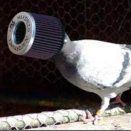Awkw Vs Rwkw Vs Flywheel/engine Kw
Announcements
-
Similar Content
-
Latest Posts
-
By MissMintyR33 · Posted
Little update I have shimmed the solenoid on the rack today following Keep it Reets video on YouTube. However my steering is still tight. I have this showing on Nisscan, my steering angle sensor was the closest to 0 degrees (I could get it to 0 degrees by small little tweaks, but the angle was way off centre? I can't figure this out for the life of me. I get no faults through Nisscan. -
By Dose Pipe Sutututu · Posted
The BES920 is like the Toyota Camrys of coffee machines. E61 group head is cool, however the time requirements for home use makes it less desirable. The Toyota Camry coffee machine runs twin boilers and also PID temp control, some say it produces coffees as good as an E61 group head machine. -
And yes with a full tank it will hit limiter free revving or driving 6B6CDF6E-4094-426D-A9CB-6C553475FE36.mp4
-
One way of putting the fuel surge idea to rest, is that even when in neutral/clutch in or free revving it still has the same issue, it can’t even get to limiter (7800) so to me that says it can’t be g force, I’m not trying to argue I just want to find the f&$king issue 😡
-
I shall avoid allowing the coffee snob in me to sniff haughtily at the hoi polloi using non-Italian, non-E61 group head dedicated boiler machines.
-




Recommended Posts
Create an account or sign in to comment
You need to be a member in order to leave a comment
Create an account
Sign up for a new account in our community. It's easy!
Register a new accountSign in
Already have an account? Sign in here.
Sign In Now